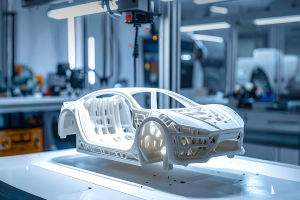Cardiac Imaging: Heart?
Heart disease continues to be a leading cause of mortality worldwide, often developing stealthily without apparent symptoms until advanced stages.
Early detection is paramount to prevent progression and improve clinical outcomes.
Understanding Cardiac Imaging and Its Role
Cardiac imaging encompasses a range of sophisticated diagnostic tools designed to capture detailed images of the heart and its vascular system. Unlike traditional diagnostic methods that may rely heavily on symptom presentation or indirect tests, contemporary imaging techniques provide direct insights into the heart's condition. These tools not only reveal anatomical abnormalities but also assess physiological function, blood flow, and tissue composition.
Early detection through imaging is crucial because many cardiovascular abnormalities begin subtly. Intervening at the earliest stage can prevent complications and offers patients a broader spectrum of medical and lifestyle therapies that can arrest or reverse disease processes. Through imaging, cardiologists can visualize plaques, valve malfunctions, weakened muscle tissues, and other markers indicative of potential heart disease before symptoms surface.
Cutting-edge Cardiac Imaging Modalities
Several innovative imaging modalities have gained prominence owing to their non-invasive nature, accuracy, and capacity for early detection:
Cardiac Computed Tomography (CT): This technique generates high-resolution, 3-dimensional cross-sectional images of the heart using X-rays. One of its subtypes, coronary CT angiography (CTA), is vital for observing the coronary arteries to detect blockages, narrowing, or calcifications. Unlike invasive angiography, it requires no catheter insertion, minimizing risk while providing comprehensive data.
Magnetic Resonance Imaging (MRI): Cardiac MRI offers detailed imaging without radiation, using magnetic fields and radio waves. This modality excels in evaluating myocardial tissue characteristics, allowing differentiation between ischemic, inflammatory, or infiltrative conditions. It also measures ventricular volumes and assesses valve function, guiding treatment strategies.
Echocardiography: Utilizing ultrasound waves, this method captures real-time images of cardiac chambers, wall motion, and valve operation. It's widely accessible and indispensable for routine surveillance, stress testing, and functional assessment.
Nuclear Cardiology: Techniques like positron emission tomography (PET) utilize radioactive tracers to evaluate myocardial perfusion and metabolism, highlighting areas with compromised blood flow even before irreversible damage occurs.
Artificial Intelligence (AI) in Cardiac Imaging: AI has recently revolutionized imaging by enhancing interpretation accuracy and accelerating diagnosis. Algorithms can now detect subtle anomalies in echocardiograms and CT scans that might be overlooked by human eyes, improving risk stratification and enabling personalized treatment.
Clinical Impact and Benefits
The transformative power of cardiac imaging lies in its ability to facilitate early intervention. Detecting coronary artery disease, valvular abnormalities, cardiomyopathies, or arrhythmogenic substrates at a nascent stage significantly improves management outcomes. Patients benefit from targeted therapies such as medications, minimally invasive procedures, or tailored lifestyle adjustments.
Advanced imaging also improves the precision of risk assessments, helping prioritize patients who need aggressive intervention and sparing others from unnecessary invasive diagnostics. This selective approach reduces healthcare costs and patient burden. Additionally, cardiac imaging is pivotal in monitoring disease progression. Serial imaging studies enable cardiologists to track therapeutic effectiveness and adjust interventions promptly to avoid deterioration.
Future Directions in Cardiac Imaging
Ongoing research continually enhances imaging resolution, reduces radiation doses, and integrates comprehensive data sets including genetic and biomarker information. Hybrid imaging techniques combining modalities like PET/MRI are being developed to provide simultaneous anatomical and functional insights.
Emerging portable imaging devices empowered by AI promise broader accessibility, especially for populations in remote or underserved regions. These innovations are expected to democratize early heart disease detection globally.
Dr. Reza Hajhosseiny, Consultant Cardiologist and Specialist in Advanced Cardiovascular Imaging, has stated about cardiac imaging: "This comprehensive multimodality imaging approach enables precise diagnosis and expert management of complex cardiac conditions such as coronary artery disease, heart failure, cardiomyopathies, and valvular heart disease."
Cardiac imaging technology stands at the forefront of cardiovascular disease management by enabling early and accurate diagnosis through diverse, non-invasive modalities. Tools such as cardiac CT, MRI, echocardiography, and nuclear imaging, enhanced by artificial intelligence, offer unparalleled insights into cardiac health prior to symptom emergence. As innovations continue, cardiac imaging will increasingly empower clinicians to preempt heart disease effectively, optimizing patient outcomes through timely care tailored to individual risks and needs.
Copyright © zogu 2021 - 2025. All Right Reserved.


